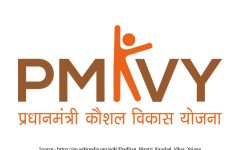Cancer-Related Mortality Rising Faster Among Women: A Growing Public Health Challenge
April 1, 2025 2025-04-01 6:01Cancer-Related Mortality Rising Faster Among Women: A Growing Public Health Challenge

Cancer-Related Mortality Rising Faster Among Women: A Growing Public Health Challenge
By Anaaya Wahi
Abstract
Globally, cancer-related mortality has been rising, and a disturbing trend has been noticed in India– cancer deaths in women are increasing more rapidly than in men. The most recent analysis by the Global Cancer Observatory (GLOBOCAN) and the Indian Council of Medical Research (ICMR) indicates that the yearly percentage change in deaths from cancer among women in 2025 varied from 1.5% to 4.8%, above the 1.3% to 2.6% rise observed among men. This concerning increase is a serious public health issue that needs immediate intervention, not merely a statistical occurrence. (ICMR, 2025; GLOBOCAN, 2025)
The Growing Burden of Cancer in India
India is plagued by cancer as it ranks as one of the top causes of mortality. According to GLOBOCAN 2025, around three out of five Indians with cancer diagnosis pass away from the illness. The five most diagnosed cancers in the nation—breast, lung, oral, cervical, and colorectal—account for roughly 46% of all cancer cases. (GLOBOCAN, 2025)
India saw over 1.7 million new cases of cancer in 2025, reported by the National Cancer Registry Programme (NCRP), and estimates indicate that it may rise to 2.5 million by 2030. Several variables, including changes in lifestyle, higher levels of pollution, increased use of alcohol and tobacco, and genetic predisposition are responsible for the increasing rate of cancer. Nonetheless, inequality in the treatment of women continues to be a grave issue.
The top five cancers in India for men, women, and both sexes jointly are shown in the graph. Tobacco smoking is an important contributor to the highest incidence of lip and oral cavity cancer (15.6%) in men, which is followed by lung (8.5%) and oesophageal cancer (6.6%). The prevalence of breast cancer (26.6%) is the highest among women, being followed by cervical (17.7%) and ovarian cancer (6.0%), emphasizing the need of HPV vaccination and early detection. The aggregated information highlights the importance of improved healthcare access and awareness campaigns by showing that breast, oral, cervical, lung, and oesophageal cancers account for a substantial portion of India’s cancer burden.

Source: GLOBOCAN 2024, International Agency for Research on Cancer (IARC). India Fact Sheet.
Why Are Cancer-Related Deaths Rising Faster Among Women?
Several factors such as misdiagnosis, limited access to high-quality healthcare, socioeconomic obstacles and biological inequalities, contribute to the rising cancer death rate among women.
Many Indian women are unaware of early symptoms and preventive tests, especially those living in rural areas. For example, when identified early, the five-year survival rate for breast cancer, the most diagnosed cancer among Indian women, is above 90%. However, about 52% of cases of breast cancer are detected at an advanced stage because of stigma and restricted access to mammography. which significantly reduces the odds of survival. (WHO,2025)
Due to financial dependency on family members and gender stereotypes in medical decision-making, women in India frequently experience disparities in medical care. According to studies, women are far less inclined than males to seek cancer treatment in a timely manner, which lowers survival chances.
Hormone-related diseases like breast and ovarian cancer are rising because of increased exposure to cancer-causing agents, such as pollutants in the air, dangerous chemicals in cosmetics, and processed food. Lung and mouth cancers have also increased because of increased drinking and smoking in women.
Some cancers are exclusive to women, such as ovarian and cervical cancer, and their death rates have alarmingly increased. Due to low vaccination rates for human papillomavirus (HPV), a leading cause of cervical cancer, it is common as only18% of eligible Indian girls have been given the HPV vaccine, putting millions at risk. (National Health Profile,2025)
The Future Outlook: Projected Cancer Trends
In the near future, India is predicted to have the largest cancer burden in history. The situation is predicted to worsen due to the nation’s rapidly aging population, growing urbanization, and changing illness trends. According to researchers, India will be accountable for 16% of all cancer cases worldwide by 2035, with approximately 2.9 million new cases per year.
If current trends continue, female cancer incidence rates might increase by 27% over the next ten years, according to information gathered by the National Institute of Cancer Prevention and Research (NICPR). The gender gap is further emphasized by the projection that the crude death rate for females will be 0.710 per 1,000 population in 2025, while the overall mortality rate for males will be 0.690.
What Can Be Done?
A holistic approach centred on awareness, early detection, and enhanced healthcare infrastructure is needed to address the rising cancer burden amongst women.
To guarantee that more women receive regular examinations for breast, cervical, and ovarian cancer, government programs such as the National Cancer Control Programme should broaden their coverage.[ZH1]
The death rate from cervical cancer might be considerably reduced by expanding HPV vaccination coverage. The government must take responsibility to ensure that all teenage girls have access to and are able to use the vaccine.
One way to close the treatment gap is to improve the healthcare system in semi-urban and rural regions. Underprivileged communities can be reached with the aid of online healthcare and mobile cancer units.
In addition to encouraging healthier eating habits and physical activity, public health initiatives should concentrate on lowering women’s use of alcohol and tobacco.
Programs for raising awareness in society can encourage women to get medical attention early by reducing the stigma associated with cancer diagnoses.
A Call to Act
Beyond just a statistic, India’s increased cancer death rate among women is a reflection of structural issues with public health awareness, gender inequality, and accessibility to healthcare. Even while there has been success, much more work has to be undertaken to prevent this spreading disease. India may strive to lower the number of cancer-related deaths and guarantee better health conditions for women nationwide with collaborative efforts from the government, medical community, and civil society.
We can alter the course of cancer in India by offering hope to millions of women who are at riskby supporting early detection, affordable treatment, and effective awareness efforts.
References
- “ICMR-NCDIR National Cancer Registry Programme Estimates 12% Increase in Cancer Cases in the Country by 2025.” INDIAN COUNCIL OF MEDICAL RESEARCH DEPARTMENT OF HEALTH RESEARCH (ICMR), 2020.
- “Report of Development of an Atlas of Cancer in Punjab State For the Years 2012 – 2013.” Indian Council of Medical Research (ICMR), NATIONAL CENTRE FOR DISEASE INFORMATICS AND RESEARCH, NATIONAL CANCER REGISTRY PROGRAMME. Accessed 20 Mar. 2025.
- Kim, Joanne et al. “Global patterns and trends in breast cancer incidence and mortality across 185 countries.” Nature medicine, 10.1038/s41591-025-03502-3. 24 Feb. 2025, doi:10.1038/s41591-025-03502-3
- The International Agency for Research on Cancer (IARC). “Global Cancer Observatory.” Global Cancer Observatory, https://gco.iarc.who.int/en. Accessed 20 Mar. 2025.
- ICMR-NICPR ANNUAL REPORT 2022 – 2023, Indian Council of Medical Research. Accessed 20 Mar. 2025.
- “Towards a Cancer-Free India | Ministry of Health and Family Welfare | GOI.” Home | Ministry of Health and Family Welfare | GOI, https://www.mohfw.gov.in/?q=pressrelease-212. Accessed 20 Mar. 2025.
- Jaisamrarn, Unnop et al. “Natural history of progression of HPV infection to cervical lesion or clearance: analysis of the control arm of the large, randomised PATRICIA study.” PloS one vol. 8,11 e79260. 19 Nov. 2013, doi: 10.1371/journal.pone.0079260
About the Author:
Anaaya Wahi is a second year Economics student with a passion for finance, policy, and research. An avid reader and writer, she has extensive experience in content writing, social media management, and graphic design. She enjoys exploring the intersection of economics, finance, policy, and storytelling.






